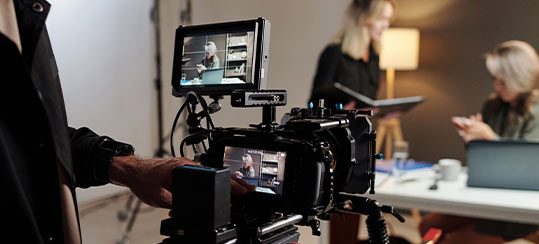Creating Video Podcasts: Cameras, Lighting, and Editing Software

Video podcasts have rapidly gained popularity, offering audiences a more immersive experience than audio podcasts alone. Whether you’re recording live interviews, roundtable discussions, or presenting solo, creating a professional-looking video podcast requires attention to three main elements: choosing the right camera, setting up effective lighting, and using reliable editing software. Below is a closer look at each component.
1. Choosing the Right Camera
DSLR and Mirrorless Cameras
These cameras generally provide high-quality video, interchangeable lenses, and advanced settings for focus and exposure. They’re a great option for anyone looking to achieve a cinematic look, but you’ll need to be mindful of potential recording time limits and the added complexity of manual settings.Webcams
A webcam can be an excellent choice for beginners or those on a tighter budget. Modern, high-end webcams often record in 1080p or 4K, offering satisfactory clarity for most video podcasts. They are also easy to set up and don’t require significant technical know-how.Smartphones
Today’s smartphones are capable of recording high-quality video. The advantages include portability, ease of use, and the ability to record in different locations without bulky equipment. However, make sure you have enough storage space and stable mounting to avoid shaky footage.
2. Mastering Lighting Techniques
Natural Lighting
Natural light from windows or outdoor environments can create a pleasing, soft effect. Position yourself so that the main light source is in front of you, minimizing harsh shadows and backlighting.Softboxes and Ring Lights
For a controlled setup, investing in softboxes or a ring light can make a big difference. These options are relatively affordable and provide a soft, even light that’s well-suited for interviews and talking-head style content.Three-Point Lighting
A classic technique in video production involves three sources: a key light, a fill light, and a backlight. This setup reduces shadows on the subject’s face and adds depth to the background. While this may require a higher budget and more space, it yields highly professional results.
3. Editing Software and Post-Production
Free Editing Software
Tools like iMovie (for Mac) or DaVinci Resolve (cross-platform) provide robust editing capabilities at no cost. They include basic features such as cutting, color correction, and text overlays, making them ideal for beginners.Professional Suites
For more advanced editing, Adobe Premiere Pro or Final Cut Pro offer extensive color grading tools, special effects, and audio enhancement features. These programs come with a steeper learning curve and a monthly or one-time fee but are well worth it for professional-level projects.Audio Enhancement
Even though you’re creating video content, sound quality still matters. Make use of audio plugins or integrated editing features to remove background noise, adjust levels, and ensure clear, consistent sound throughout your podcast.
Conclusion
Creating a polished video podcast involves balancing the right equipment and techniques with your personal style and budget. Selecting the right camera, lighting setup, and editing software can make a substantial difference in production value, helping your content stand out in a crowded market. By investing time in pre-production planning and post-production enhancements, you’ll be well on your way to delivering a video podcast that engages and retains your audience.
